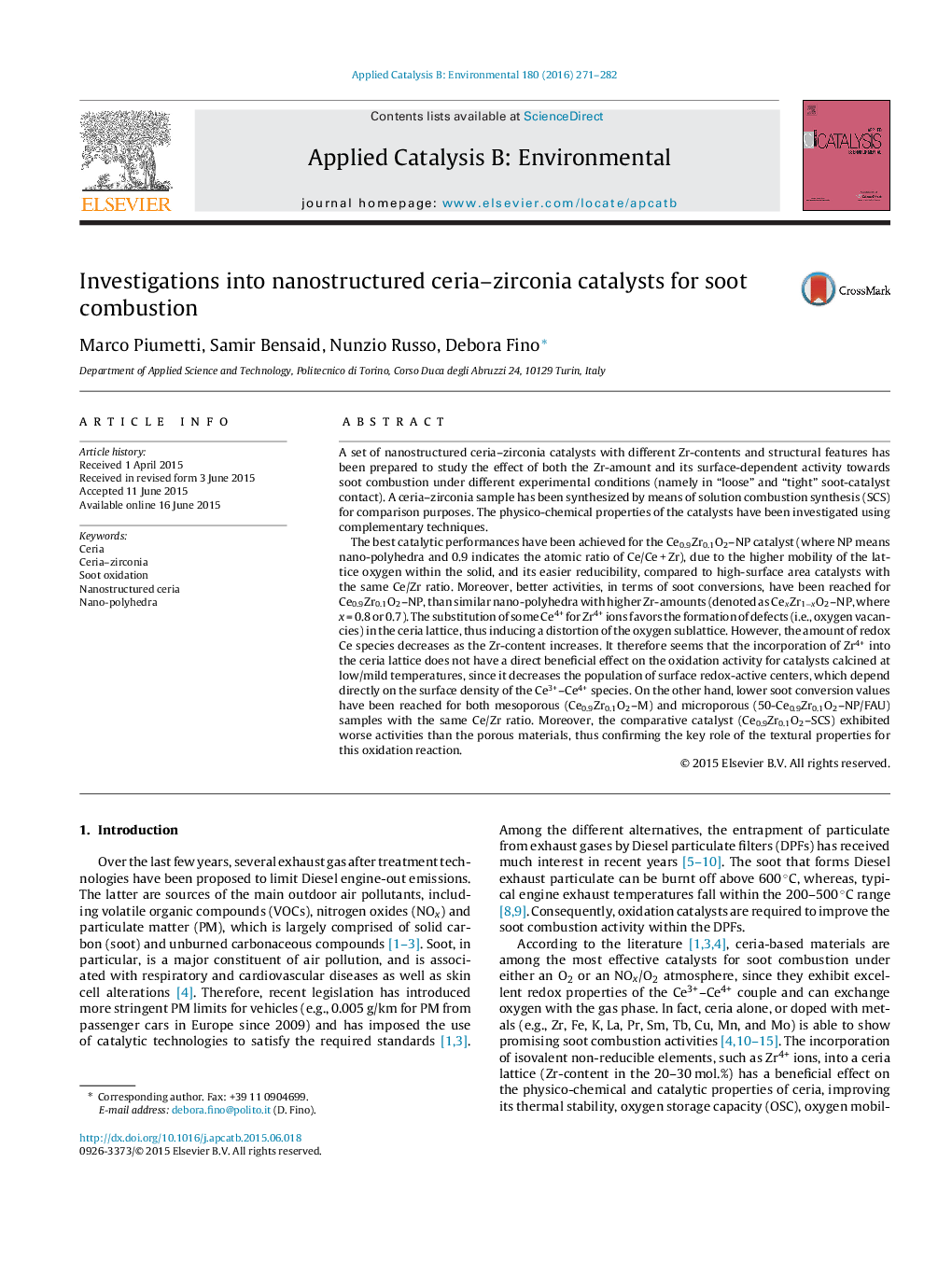| کد مقاله | کد نشریه | سال انتشار | مقاله انگلیسی | نسخه تمام متن |
|---|---|---|---|---|
| 45243 | 46407 | 2016 | 12 صفحه PDF | دانلود رایگان |
• Ceria–zirconia nanomaterials are active for soot combustion.
• Ceria–zirconia nano-polyhedra showed the highest activity for soot combustion.
• Worse activities have been obtained for porous catalysts with comparable Ce/Zr ratio.
• The most active catalyst showed better redox features and easier surface reducibility.
A set of nanostructured ceria–zirconia catalysts with different Zr-contents and structural features has been prepared to study the effect of both the Zr-amount and its surface-dependent activity towards soot combustion under different experimental conditions (namely in “loose” and “tight” soot-catalyst contact). A ceria–zirconia sample has been synthesized by means of solution combustion synthesis (SCS) for comparison purposes. The physico-chemical properties of the catalysts have been investigated using complementary techniques.The best catalytic performances have been achieved for the Ce0.9Zr0.1O2–NP catalyst (where NP means nano-polyhedra and 0.9 indicates the atomic ratio of Ce/Ce + Zr), due to the higher mobility of the lattice oxygen within the solid, and its easier reducibility, compared to high-surface area catalysts with the same Ce/Zr ratio. Moreover, better activities, in terms of soot conversions, have been reached for Ce0.9Zr0.1O2–NP, than similar nano-polyhedra with higher Zr-amounts (denoted as CexZr1−xO2–NP, where x = 0.8 or 0.7). The substitution of some Ce4+ for Zr4+ ions favors the formation of defects (i.e., oxygen vacancies) in the ceria lattice, thus inducing a distortion of the oxygen sublattice. However, the amount of redox Ce species decreases as the Zr-content increases. It therefore seems that the incorporation of Zr4+ into the ceria lattice does not have a direct beneficial effect on the oxidation activity for catalysts calcined at low/mild temperatures, since it decreases the population of surface redox-active centers, which depend directly on the surface density of the Ce3+–Ce4+ species. On the other hand, lower soot conversion values have been reached for both mesoporous (Ce0.9Zr0.1O2–M) and microporous (50-Ce0.9Zr0.1O2–NP/FAU) samples with the same Ce/Zr ratio. Moreover, the comparative catalyst (Ce0.9Zr0.1O2–SCS) exhibited worse activities than the porous materials, thus confirming the key role of the textural properties for this oxidation reaction.
Figure optionsDownload as PowerPoint slide
Journal: Applied Catalysis B: Environmental - Volume 180, January 2016, Pages 271–282
